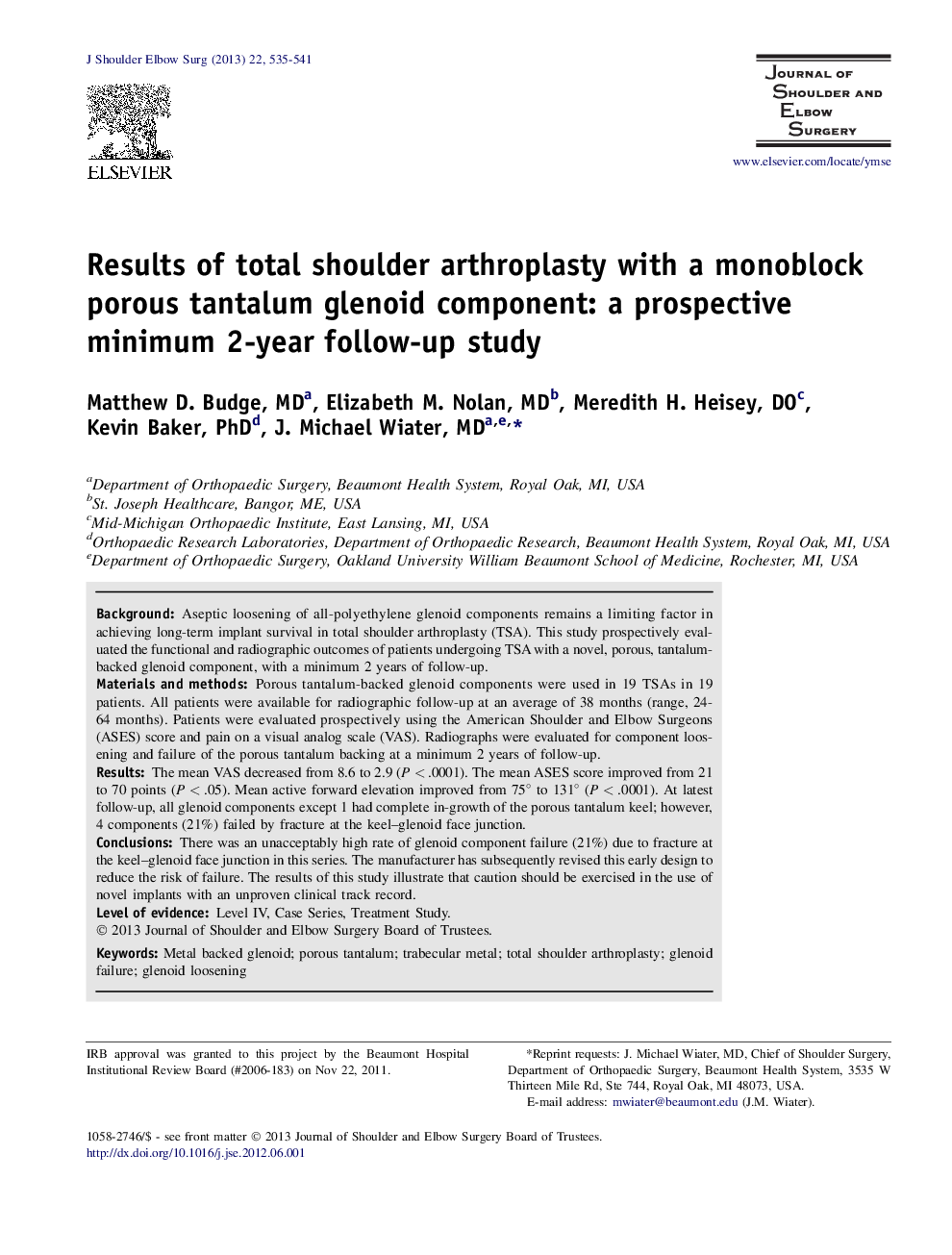| Article ID | Journal | Published Year | Pages | File Type |
|---|---|---|---|---|
| 4075026 | Journal of Shoulder and Elbow Surgery | 2013 | 7 Pages |
BackgroundAseptic loosening of all-polyethylene glenoid components remains a limiting factor in achieving long-term implant survival in total shoulder arthroplasty (TSA). This study prospectively evaluated the functional and radiographic outcomes of patients undergoing TSA with a novel, porous, tantalum-backed glenoid component, with a minimum 2 years of follow-up.Materials and methodsPorous tantalum-backed glenoid components were used in 19 TSAs in 19 patients. All patients were available for radiographic follow-up at an average of 38 months (range, 24-64 months). Patients were evaluated prospectively using the American Shoulder and Elbow Surgeons (ASES) score and pain on a visual analog scale (VAS). Radiographs were evaluated for component loosening and failure of the porous tantalum backing at a minimum 2 years of follow-up.ResultsThe mean VAS decreased from 8.6 to 2.9 (P < .0001). The mean ASES score improved from 21 to 70 points (P < .05). Mean active forward elevation improved from 75° to 131° (P < .0001). At latest follow-up, all glenoid components except 1 had complete in-growth of the porous tantalum keel; however, 4 components (21%) failed by fracture at the keel–glenoid face junction.ConclusionsThere was an unacceptably high rate of glenoid component failure (21%) due to fracture at the keel–glenoid face junction in this series. The manufacturer has subsequently revised this early design to reduce the risk of failure. The results of this study illustrate that caution should be exercised in the use of novel implants with an unproven clinical track record.
